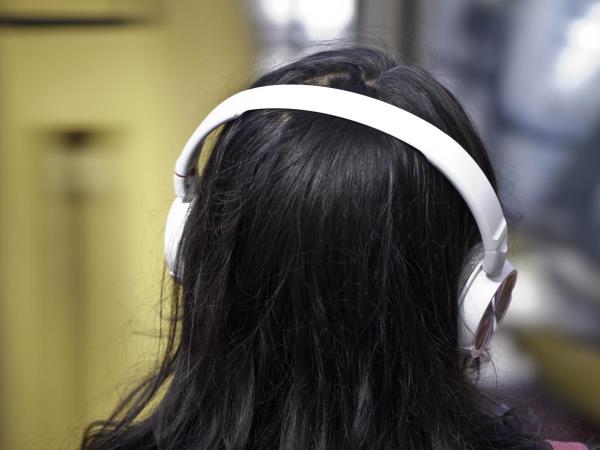What exactly is white noise?
You can think of it as a sound that contains all the frequencies audible to the human ear, simultaneously and evenly. This means it's a kind of audio mixture where no tone stands out. Simply put: it's like a very faint rustling that masks all other disturbing sounds around you.
Scientists say that white noise encompasses over 20,000 different frequencies. Interestingly, many babies find it very soothing. Perhaps because it reminds them of the sounds they heard in the mother's womb. And you know – within each of us still lives that little child yearning for safety and peace.
Why does white noise calm?
The sound of waves, gentle rain, a background vacuum cleaner, or fan humming – all of these can fall under white noise. But experts caution: these are not perfect examples of pure white noise, although they come very close.
Genuine white noise used for therapeutic purposes is produced by special devices called white noise generators. These are usually large, bulky, and quite expensive, so they are typically only used in specialized sleep disorder or tinnitus treatment clinics (that annoying ringing or buzzing in the ears).
But there's no need to worry about using it at home! Today, you can find white noise in the form of recordings on YouTube, purchase it on CDs, or even download an app on your smartphone.
How does it work exactly?
White noise acts as a shield against unwanted sounds from the environment. It masks a barking dog, traffic noise, or a neighbor's TV that you would otherwise hear through the wall. This allows your mind to relax and switch off.
A study published in the journal Frontiers in Human Neuroscience (2017) showed that the use of white noise improved sleep quality in 80% of participants with insomnia issues. Moreover, the average time they needed to fall asleep decreased by as much as 38%!
When is white noise particularly useful?
If you have trouble sleeping, are disturbed by everyday noises at night, or are simply stressed, white noise can be your solution.
The American National Sleep Foundation states that around 30% of adults regularly suffer from insomnia. Among those who use white noise, sleep quality improved in as many as 70% of users.
It is particularly useful for:
- Infants who calm down and fall asleep faster. A study from the Archives of Disease in Childhood showed that 80% of babies fell asleep in less than five minutes while listening to white noise!
- People with tinnitus (ringing in the ears), as white noise masks unpleasant sounds and helps the brain forget them.
- Those who meditate, as the sound aids in deeper relaxation and concentration.
Is it safe to use?
Most experts agree that using white noise is safe if not too loud. The recommended intensity is below 50 decibels – which is about as loud as a quiet conversation. If the sound is too loud, it can have long-term effects on your hearing, so be cautious with volume settings.
The best practice is to set white noise to barely cover other disturbing sounds.
Are there any downsides?
Like everything, white noise has its pitfalls. Some researchers warn that the brain can become too accustomed to the audio backdrop, meaning that later, falling asleep without white noise may be more challenging. However, most users report positive effects, and very few develop dependence.
A study from Pediatrics (2014) warns parents, in particular, to be mindful of the volume of white noise devices for infants, as prolonged and loud exposure can negatively impact hearing development.
Best white noise sounds
If you're looking for the most soothing versions, experts recommend:
- the sound of gentle rain,
- ocean waves,
- wind in the trees,
- gentle fan noise.
White noise and stress
Today's pace of life is stressful. According to the World Health Organization (WHO), over 264 million people worldwide suffer from anxiety. Regular use of white noise can help give your mind a break from constant worries.
Experts from Johns Hopkins University have demonstrated that listening to white noise for 30 minutes daily reduces the cortisol stress hormone level in the blood by an average of 12%.
Quick experiment: Try it today!
If you're curious about how white noise works in practice, we suggest the following: take 10 minutes for yourself in the evening. Lie down in bed, play the sound of gentle rain or ocean waves, and close your eyes. After a few minutes, you'll notice your body becoming heavier, and your thoughts calming down.
Our opinion: White noise is a simple and accessible solution for anyone looking for more peace, better sleep, and less stress. Although it's not a miraculous cure, the effects are so convincing that it's definitely worth trying. With so much noise surrounding us every day – why not treat yourself to the sound that brings silence to your thoughts?









 Would you like to be informed about news on the website?
Would you like to be informed about news on the website?

